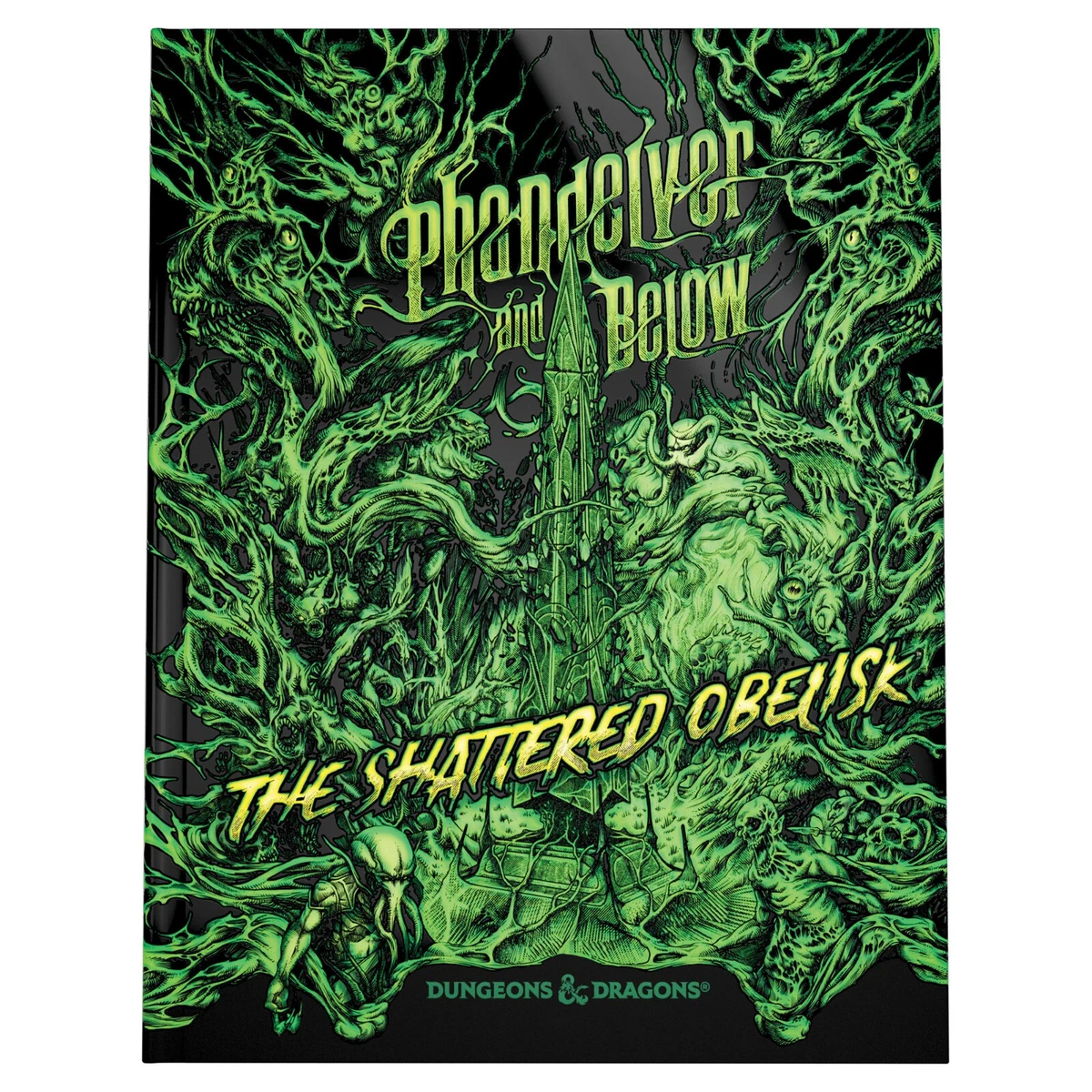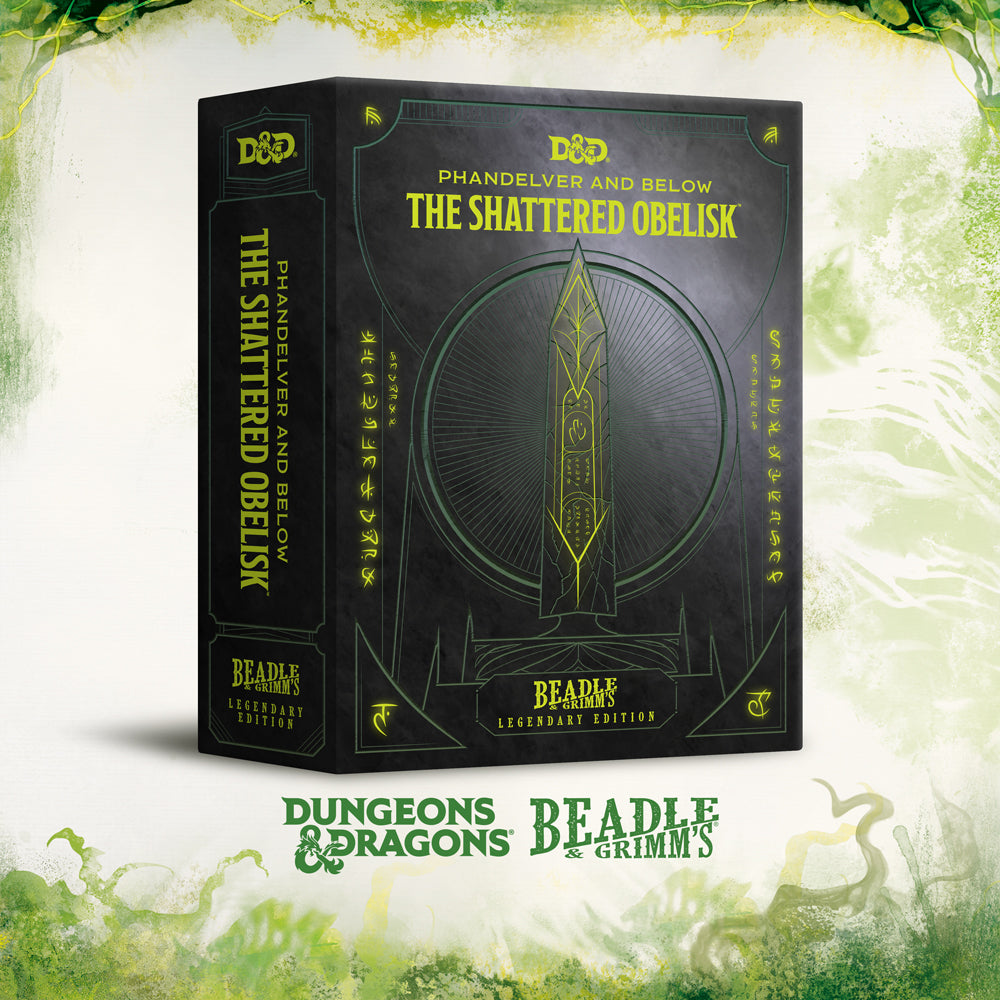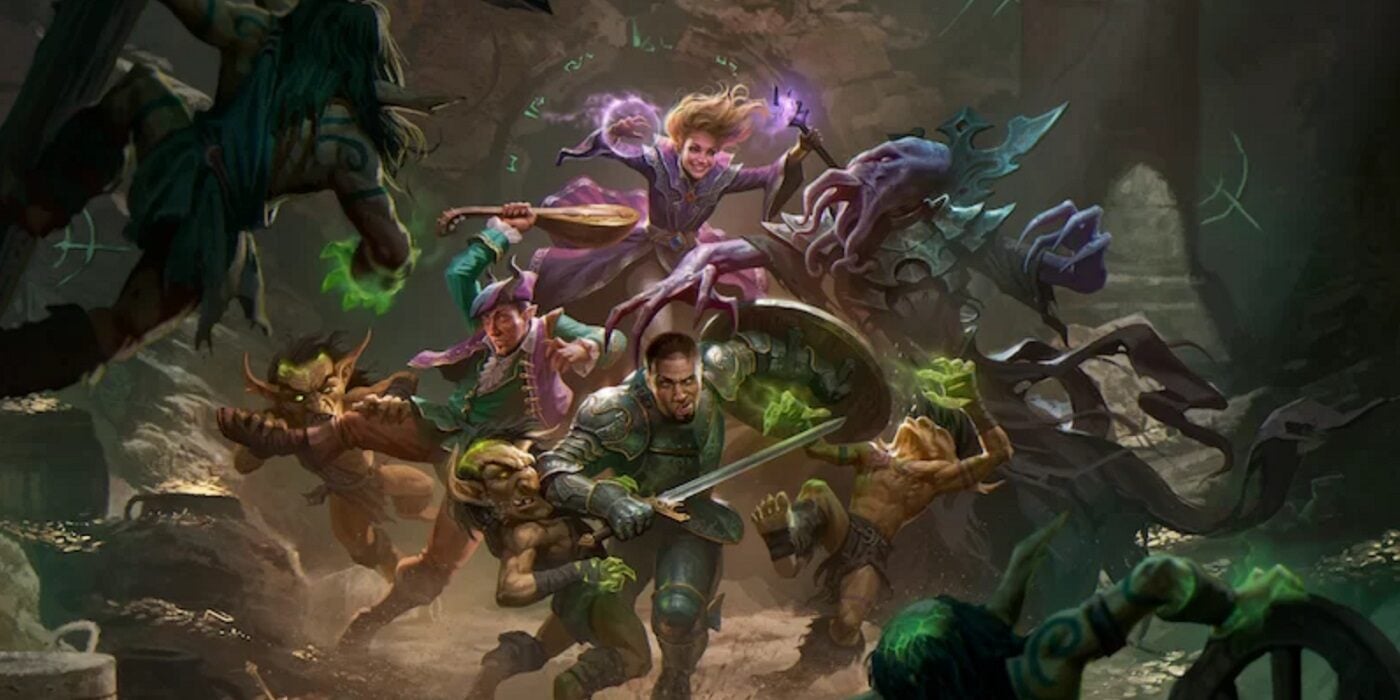Phandelver and Below: The Shattered Obelisk
Mild spoilers ahead
Call it nostalgia, but I often dream of going back to the setting of great D&D adventures. I like to imagine that certain old locals have more adventures to offer returning player characters.
Phandelver and Below: The Shattered Obelisk is providing us with that opportunity by returning to one of 5e D&D’s favorite settings, Lost Mine of Phandelver.
Lost Mine of Phandelver: the little adventure that could
I like to call Lost Mine of Phandelver the “little adventure that could,” because it had a lot to offer for something meant to be an introductory adventure in the 2014 Starter Set. It’s proven to be a hit among both new and more OG players. It’s at once a great way to introduce players to 5e mechanics while also feeling like an homage to classical D&D.
Adding to a classic adventure
Phandelver and Below: The Shattered Obelisk is something of a new approach from WoTC. This much expanded adventure is not to be mistaken with Curse of Strahd Revamped, which was merely a premium version of the Curse of Strahd adventure released in 2016. In this adventure, WoTC is taking us back to Phandalin, the village at the center of Lost Mine of Phandelver, for a brand-new adventure.
The new book does include the Lost Mine of Phandelver adventure, and that is proving to be a good idea for several reasons. New players who will begin their D&D journey through this adventure can enjoy the smooth introduction to 5e mechanics and D&D storytelling provided by Lost Mine of Phandelver.
Replaying Lost Mine of Phandelver might also prove to be interesting for players who already played it in the past. Lost Mine of Phandelver was made more challenging in this version. This will be great news for experienced 5e players who may have cut their teeth on the Starter Set version of the adventure, and who may want to run the adventure again with fresh first-level characters for a new challenge.
More monsters are thrown at the adventurers, and the new goblins with psychic powers make a great addition while also foreshadowing the second part of the adventure. This version also includes new art that helps visualize the various NPCs and denizens of the goblin lair. The map of the ambush site, for example, is a great addition.
Skipping to the new content
 Players have the option of skipping Lost Mine of Phandelver. The adventure provides an easy entry point for experienced characters only interested in the new content. The second part of the adventure is appropriate for characters levels 5 to 12. There are plenty of reasons to bring experiences characters back to Phandalin, and the book provides several hooks that can be easily adapted to any adventurers. For example, characters who ran Dragon of Icespire Peak will be well positioned to start with the new content in Phandelver and Below.
Players have the option of skipping Lost Mine of Phandelver. The adventure provides an easy entry point for experienced characters only interested in the new content. The second part of the adventure is appropriate for characters levels 5 to 12. There are plenty of reasons to bring experiences characters back to Phandalin, and the book provides several hooks that can be easily adapted to any adventurers. For example, characters who ran Dragon of Icespire Peak will be well positioned to start with the new content in Phandelver and Below.
Dragon of Icespire Peak took place around Phandalin and characters who ran the adventure would be the right level to start with the new content in Phandelver and Below: The Shattered Obelisk. DMs will appreciate this flexibility.
Getting your money’s worth
Players and DMs who feel that they are being cheated by having to pay once again for the re-release of an older adventure should know that Lost Mine of Phandelver represents only about 70 pages of the 220-page full adventure. The remaining pages offer a full adventure with plenty of content well worth the investment.
Starting with chapter 5, players enter a brand-new adventure. There’s plenty of new material here, including multiple dungeons, ventures into both the Underdark and the Far Realm, interesting new monsters and magical items and a challenging final boss. The adventure also provides some closure to the mystery of the obelisks that have been popping up in previous D&D adventures. It’s not an earth-shattering revelation, but WoTC did a fine job of slowly building the intrigue and providing some climax to the enigma.
While certain players might criticize WoTC for going back to an old adventure instead of publishing something entirely new, I rather like this approach that uses the familiar to introduce players to a new adventure. And when I say “new,” I really mean it, because the contrast between Lost Mine of Phandelver and the second act of Phandelver and Below: The Shattered Obelisk could not be more pronounced.
Warning: Body horror ahead
While horror has always played a part in D&D, the game has always had more of a sword & sorcery feeling. My idea of horror in D&D begins and ends with gothic horror and such classics as the Ravenloft adventures. Phandelver and Below: The Shattered Obelisk ventures into more Lovecraftian territory. You’ll want to steer clear of this adventure if you don’t like tentacles and body horror mixed in with your sword & sorcery.
The body horror not only affects NPCs and creatures. It also affects player characters. Its impact on the adventure is sufficiently important that the authors stress that DMs should obtain consent from their players before using the body transformation rules presented in the adventure.
While I am not a fan of body horror, the adventure does a wonderful job building up to it. There is something wrong in Phandelver (besides the goblin raiders and the Redband brigands), and it becomes more and more evident as the adventure progresses. The writers did a wonderful job building up the dread atmosphere and the escalating horror. Players who like a bit of horror mixed in with their D&D will no doubt enjoy it very much—I certainly did, despite my initial reservation toward body and Cthulhu-style horror—and the timing could not have been better with Halloween just around the corner. DMs can always remove the body horror, or scale it down, without making the storyline suffer too much.
and the Redband brigands), and it becomes more and more evident as the adventure progresses. The writers did a wonderful job building up the dread atmosphere and the escalating horror. Players who like a bit of horror mixed in with their D&D will no doubt enjoy it very much—I certainly did, despite my initial reservation toward body and Cthulhu-style horror—and the timing could not have been better with Halloween just around the corner. DMs can always remove the body horror, or scale it down, without making the storyline suffer too much.
The adventure also features a staple D&D monster, the mind flayer. The Illithids are making something of a comeback in D&D these days with the release of the Baldur’s Gate 3 CRPG. They are challenging monsters and fit right into the theme of this adventure.
Art that adds to the story
The art throughout the book is the usual mix of what we can expect from a D&D adventure: NPC sketches, maps, depictions of situations, monsters, and interesting locations. The art is particularly fascinating in this adventure; it’s plentiful and will inspire DMs to describe people and situations more vividly. Starting with the full-page illustration flanking chapter 1 depicting how dangerous the road to Phandalin can be, you can tell that a lot of efforts went into adding value to this adventure by lavishly illustrating it.
The NPC sketches are a very welcome addition. They help flesh out some characters, including Gundren Rockseeker, the instigator of the Lost Mine of Phandelver adventure, and Glasstaff, its main villain. The added maps, including the goblin ambush site, are a great addition helping to visualize where the action takes place. There is plenty of new art depicting the Cragmaw hideout and its denizens. The full-page illustration of the banshee Agatha Brooks is particularly evocative, and a reminder of how great D&D illustrations can be.
Detachable map included
The large, detachable map at the back makes a welcome return. Personally, I miss the days when the adventures were thinner, stapled books that could more easily  be photocopied. It’s always a pain to photocopy maps from those thick-bound books, so the detachable map is greatly appreciated. It’s a bonus that it does not need to be purchased separately as was the case for previous adventures like Dungeon of the Mad Mage.
be photocopied. It’s always a pain to photocopy maps from those thick-bound books, so the detachable map is greatly appreciated. It’s a bonus that it does not need to be purchased separately as was the case for previous adventures like Dungeon of the Mad Mage.
A missed opportunity for a high-level adventure
The main thing that bothers me about this book is that it is just another adventure for first-level characters. The adventure contains enough material to bring characters all the way up to level 12. But what then? 5e D&D adventures released by WoTC seem hopelessly stuck at starter level. Given its material, this adventure could have easily been designed for characters above level 12. This would have pleased a lot of players desperate for adventures for their high-level characters. There is a connection to the obelisks and Vecna in this adventure, so hopefully this will tie in with the upcoming Vecna adventure and be written for higher-level characters.
Conclusion
Overall, this is an adventure in the best D&D tradition. This adventure feels like a return to classical first edition D&D—with body horror thrown in. For anyone who is nostalgic, this adventure will strike a sensitive chord. For forgotten realms scholars, this adventure will provide a pleasant treasure trove of lore.
Lost Mine of Phandelver has become a favorite of mine. It’s a great adventure, not only for new players, but also for OG players who want to dive into 5e DND using a classical D&D adventure. It’s great to go back to Phandelver for more adventures.
